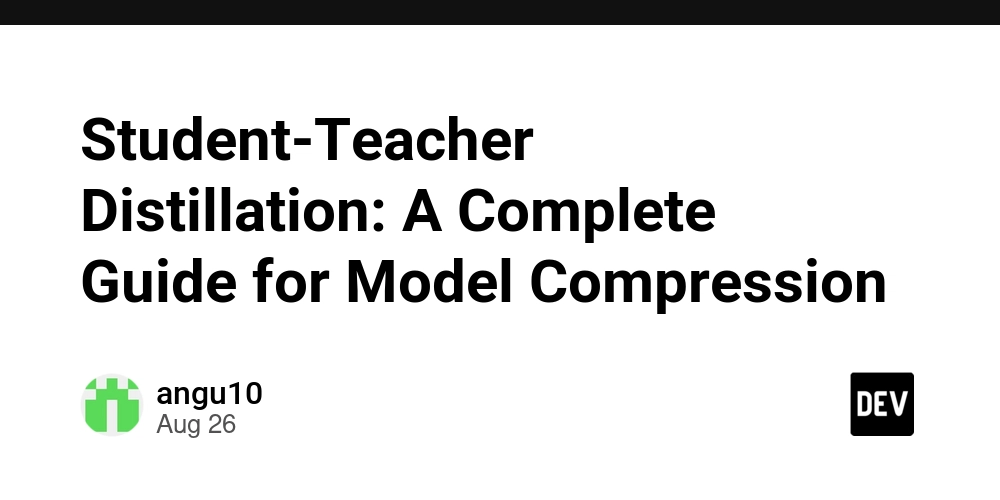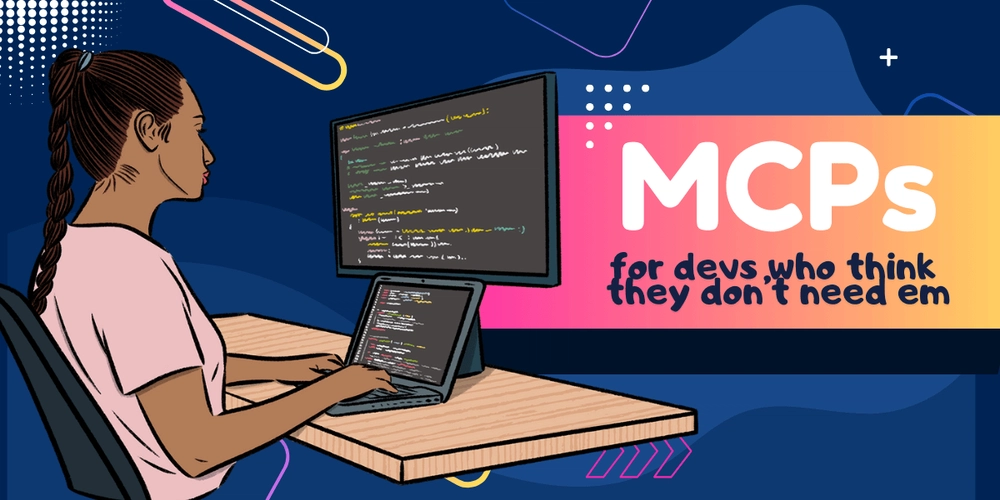Part 1 of our Deep Learning Model Optimization Series
In the rapidly evolving world of machine learning, deploying large, powerful models in production environments often presents significant challenges. Enter student-teacher distillation—a powerful technique that allows us to compress the knowledge of complex models into smaller, more efficient ones without sacrificing too much accuracy. This comprehensive guide will walk you through everything you need to know about this fascinating approach to model optimization.
What is Student-Teacher Distillation?
Student-teacher distillation, also known as knowledge distillation, is a model compression technique where a smaller “student” model learns to mimic the behavior of a larger, more complex “teacher” model. Think of it as an experienced professor (teacher) passing on their knowledge and wisdom to a bright student who can then apply that knowledge more efficiently.
The core idea is beautifully simple: instead of training the student model from scratch on the original data, we train it to match the teacher’s outputs. The teacher model provides “soft targets” or probability distributions that contain richer information than the hard labels in the original dataset. These soft targets capture the teacher’s uncertainty and the relationships between different classes, which helps the student learn more nuanced decision boundaries.
The Magic Behind Soft Targets
When a teacher model predicts a class, it doesn’t just output a binary decision—it provides a probability distribution across all possible classes. For example, when classifying an image of a dog, the teacher might output:
- Dog: 0.8
- Wolf: 0.15
- Cat: 0.03
- Other: 0.02
This distribution tells us that while the model is confident it’s a dog, it also sees some wolf-like features. This nuanced understanding, captured in the soft targets, helps the student model learn more effectively than just knowing “this is a dog.”
Student-Teacher Distillation vs. Fine-Tuning: Understanding the Key Differences
While both techniques involve training smaller models, they serve fundamentally different purposes and follow distinct approaches.
Fine-Tuning: Adapting Pre-trained Knowledge
Fine-tuning takes a pre-trained model (often trained on a large, general dataset) and adapts it to a specific task or domain. You start with a model that already understands general patterns and then specialize it for your particular use case. It’s like taking a general physician and having them specialize in cardiology.
Key characteristics of fine-tuning:
- Starts with a pre-trained model of similar or identical size
- Adapts existing knowledge to new domains or tasks
- Typically involves training on task-specific data
- The final model size remains roughly the same
- Primary goal is task adaptation, not compression
Student-Teacher Distillation: Knowledge Compression
Distillation, on the other hand, is primarily about compression and efficiency. You’re taking a large, complex model and teaching a smaller model to replicate its behavior. The student model learns to approximate the teacher’s decision-making process within a more constrained architecture.
Key characteristics of distillation:
- Creates a smaller model from a larger one
- Focuses on knowledge transfer and compression
- The student learns from the teacher’s outputs, not just original data
- Significant reduction in model size and computational requirements
- Primary goal is efficiency while maintaining accuracy
When to Use Which Approach
Choose fine-tuning when you have a model that’s already the right size for your deployment constraints, but you need to adapt it to a specific domain or task. Choose distillation when you have a high-performing model that’s too large or slow for your production requirements.
How to Choose the Right Teacher Model
Selecting an appropriate teacher model is crucial for successful distillation. The teacher sets the accuracy ceiling for your student, so this decision significantly impacts your final results.
Accuracy is King
Your teacher model should excel at the target task. There’s no point in distilling from a mediocre teacher—the student can only learn what the teacher knows. Look for models with:
- High accuracy on your target dataset
- Strong generalization capabilities
- Robust accuracy across different data distributions
- Well-calibrated confidence scores
Architecture Considerations
While the teacher doesn’t need to share the same architecture as the student, some considerations matter:
- Complexity advantage: The teacher should be significantly more complex than the student to justify the distillation process
- Task alignment: Models designed for similar tasks often make better teachers
- Output compatibility: Ensure the teacher’s output format aligns with your distillation setup
Practical Factors
Don’t overlook practical constraints:
- Computational resources: You need to be able to run inference on the teacher model during training
- Licensing and availability: Ensure you have access to the teacher model and can use it for your purposes
- Data compatibility: The teacher should work well with your training data
Multi-Teacher Approaches
Consider using multiple teacher models when:
- Different teachers excel at different aspects of the task
- You want to ensemble knowledge from various sources
- You’re working with complex, multi-modal tasks
Selecting the Perfect Student Model
Choosing the student model involves balancing accuracy goals with deployment constraints. This is where the art of distillation really shines.
Size and Efficiency Targets
Start by defining your deployment requirements:
- Latency constraints: How fast must inference be?
- Memory limitations: What’s your RAM/storage budget?
- Power consumption: Are you deploying on mobile or edge devices?
- Throughput requirements: How many predictions per second do you need?
Architectural Choices
The student architecture should be:
- Appropriately sized: Small enough to meet deployment constraints, large enough to capture essential patterns
- Well-suited to the task: Some architectures naturally excel at certain types of problems
- Efficiently designed: Modern efficient architectures like MobileNets, EfficientNets, or DistilBERT are often good starting points
The Goldilocks Principle
Your student model size should be “just right”:
- Too small: The model lacks the capacity to learn the teacher’s knowledge effectively
- Too large: You lose the efficiency benefits and might as well use a larger model directly
- Just right: Provides the best trade-off between accuracy and efficiency
Advanced Strategy: Progressive Distillation
For very large compression ratios, consider progressive distillation as your student model selection strategy:
- Start with a large teacher
- Distill to a medium-sized intermediate model
- Use the intermediate model as a teacher for an even smaller student
This stepped approach often yields better results than trying to compress directly from very large to very small models.
Pros and Cons of Student-Teacher Distillation
Like any technique, distillation comes with its own set of advantages and limitations. Understanding these will help you make informed decisions about when and how to apply this approach.
The Compelling Advantages
Significant Model Compression
The most obvious benefit is the dramatic reduction in model size. You can often achieve 5-10x compression while retaining 90-95% of the original accuracy. This makes deployment feasible in resource-constrained environments.
Faster Inference
Smaller models mean faster predictions. This translates to better user experience, lower latency, and the ability to serve more requests with the same hardware.
Lower Computational Costs
Reduced model size means lower memory usage, less power consumption, and cheaper inference costs—especially important when serving millions of requests.
Preserved Knowledge Quality
Unlike simple pruning or quantization, distillation preserves the nuanced decision-making patterns of the teacher model. The student learns not just what to predict, but how to think about the problem.
Enhanced Generalization
Soft targets from the teacher model often help students generalize better than training on hard labels alone. The teacher’s uncertainty provides valuable regularization.
Flexibility in Architecture
You can distill knowledge across different architectures, allowing you to optimize for specific deployment requirements while retaining accuracy.
The Notable Limitations
Accuracy Ceiling
The student can rarely exceed the teacher’s accuracy. You’re fundamentally limited by the teacher’s knowledge and capabilities.
Training Complexity
Distillation requires careful hyperparameter tuning, temperature selection, and loss function balancing. It’s more complex than standard training.
Computational Overhead During Training
You need to run both teacher and student models during training, which can be computationally expensive and time-consuming.
Teacher Dependency
The quality of your distillation is fundamentally limited by your teacher model. A biased or poorly accurate teacher will pass these issues to the student.
Diminishing Returns
Very aggressive compression (e.g., 100x smaller) often leads to significant accuracy degradation. There are practical limits to how much you can compress.
Task-Specific Effectiveness
Distillation works better for some tasks than others. Classification tasks often see better results than generation tasks, for instance.
When Distillation Shines
Student-teacher distillation is particularly effective when:
- You have a high-accuracy large model that’s too slow for production
- Deployment constraints (mobile, edge devices) require smaller models
- You need to serve high-volume requests efficiently
- The task has clear input-output relationships
- You have sufficient computational resources for training
When to Consider Alternatives
Consider other approaches when:
- Your teacher model isn’t significantly better than smaller alternatives
- Training time and computational costs outweigh deployment benefits
- You need the absolute best accuracy regardless of size
- Your deployment environment can accommodate larger models
- The task requires capabilities that are hard to distill (like complex reasoning)
Looking Ahead
Student-teacher distillation represents a powerful tool in the modern ML practitioner’s toolkit. As models continue to grow larger and more capable, the ability to efficiently compress and deploy them becomes increasingly valuable.
In our next article, we’ll dive into the practical implementation details, including code examples, loss function design, and training strategies that will help you implement your own distillation pipeline. We’ll explore different distillation variants, advanced techniques like attention transfer, and share best practices learned from real-world deployments.
The journey from understanding the theory to implementing effective distillation systems is both challenging and rewarding. With the foundation we’ve built here, you’re well-equipped to start exploring this fascinating area of machine learning optimization.
Stay tuned for Part 2, where we’ll get our hands dirty with implementation details and practical code examples that will bring these concepts to life.



